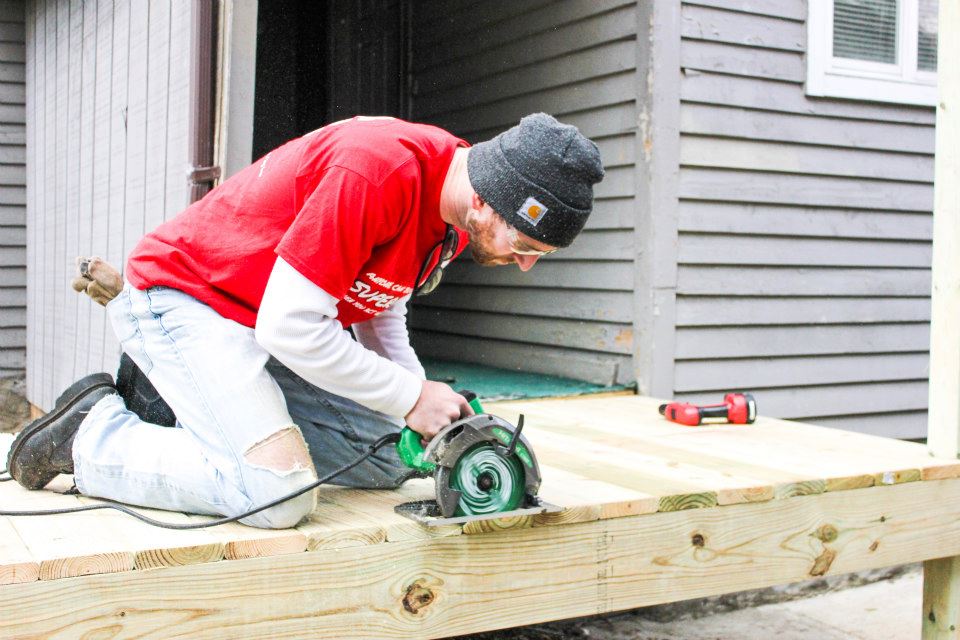‘Tis the Season: 4 Ways to Encourage More People to Donate This Holiday Season
8 min read
It’s that time of year when people feel most generous—and also when people are asked most to donate.
Salvation Army bells stop you at every store asking for spare change, cashiers ask you if you would like to donate to a cause the store is supporting, and commercials and emails confront you (what feels like) all day long.
There is no shortage of opportunities to give back this time of year.
Why, then, do I often find myself putting it off time after time, only to feel guilty afterward that I keep saying no?
This got me thinking: maybe it’s not a problem with me, but a problem with the donation experience as a whole.
While it is a generous time of year, there are also many factors playing against the charities we love. Money is tight, we are constantly in a hurry, and we’re teetering toward mental capacity…it’s simply a crazy time.
How can we not only make donating easier, but also make it a convenient, delightful experience?
Here are a few things I know would make me more inclined to give during such a busy time of year:
Ask me if you can take what I’m already going to get rid of.
If you are like me, when you pay for something with cash and you’re given coins back, you immediately look for the “leave a penny” container or a tip jar. When you leave a tip at a restaurant, you try to make it an even whole number. Or—and I know I’m not the only one who does this—when filling up with gas, you try your darndest to hit an even quarter. As silly as it is, extra change can just be annoying.
So, what’s a good way to get donations out of people like me? I can think of one place that’s doing it right: Firehouse Subs. If you didn’t know, Firehouse Subs are founded on helping support firefighters across the nation.
When I bought a sandwich at my local Madison location the other day, they asked me if I would like to “round out” my bill, with the extra change going to the firefighters. This was such an interesting concept in my mind. Instead of asking for a dollar amount (to which I’m often guilty of saying no), they adhered to customers’ tendencies to get rid of change or round up their charge to an even dollar amount—and used those tendencies for a good cause.
Some others doing it right are Amazon and Goodwill. The two paired up to create Give Back Box—an effortless way to donate household items you were already going to get rid of. You can reuse online shipping boxes (or any other cardboard box) by putting in the items you wish to donate, printing off a prepaid shipping label from the website, and either dropping it off at your local UPS or USPS, or requesting for them to pick it up from your house. Added bonus: the shipping is FREE. Once again, by taking advantage of user behavior, they are creating more opportunities for people to conveniently donate what they were already planning on giving away.
Taking advantage of user behavior creates more opportunities for them to conveniently donate.
Tell me where my money is going.
Funny enough, while the Salvation Army is one of the most well known non-profits, I was pretty hazy on what they actually did or who they helped.
While asking around my office, I realized something even more interesting: hardly anyone knew the specifics. In fact, only four people had a vague idea, and ten people didn’t have a clue.
How odd is it that an organization that so many support is such a mystery?
“I don’t know if I can say off hand what the Salvation Army does. The big non-profits blur together for me unfortunately. I know they help people in need, but I don’t know where that money goes or how it’s used.”
Salvation Army, here’s what I think you should do: tell me exactly what this current fundraising effort will benefit. All it takes is a sign, a poster, or heck—even a chalk board.
If it’s all going to the organization as a whole, show me a list of your programs and efforts, who I’m helping, where my money is going.
After seeing the long list of ways you help—spreading Christianity, relieving poverty, disaster relief, homeless shelters, charity shops, missing person services (who knew?), and so on—I have to believe at least one of those efforts will resonate with people walking by.
Don’t ask me to go out of my way.
I’ll be the first to admit that one of the biggest things that keeps me from donating to my friendly neighborhood bell ringers is the inconvenience of the location—the door. And I wasn’t the only one in my office to feel this way.
“I understand they’re trying to grab my attention on my way both in and out of the store. But that means I have to stop in the doorway, take off my mittens, and dig through my buttoned wallet inside my zipped purse looking for change—all the while trying not to block the way for people coming into the store. It doesn’t help that it’s also freezing outside.”
Now, that may not be the most selfless attitude, but I’d be willing to bet there are many more out there who are stopped by the very same reason.
I’d be much more likely to donate if you were to somehow insert yourself into the in-store transaction process—rather than when my wallet is put away, and my mind has moved on to my next task.
Here’s an example: stand inside where it’s warm, perhaps near the end of the register line. I will see you while I’m in line, which means I will have time to consciously decide to give you the change from my purchase (or get my donation out while I’m already in my wallet). Then I can conveniently give it to you as I walk by without standing in anyone’s way.
Ask me for something other than cash.
There’s one obvious way to take this. One of the most common answers I heard when asking people what stops them from donating is the fact that they don’t have cash on them. Mobile payment is quickly becoming a preferred method of transferring money (i.e. Venmo, Google Wallet, Paypal, Square Cash). While you should still provide a way to collect cash, you may also want to provide your account name for a service like the ones listed above, allowing for quick and easy mobile payment methods for those who don’t carry spare cash.
Perhaps less obvious, ask people to donate something other than money entirely. Many people just don’t have it in their budget to give their money away, as much as they’d like to. But what they do have is time–and talent.
Our team here at Visual Logic recently donated three days of our time redesigning a website for a non-profit organization. They desperately needed a new website, but had no time, money, or employees to spare in order to do so.
“People take pride in their skills and talents. As an individual, I feel very flattered when I’m asked to do things for my friends and family that they can’t do on their own. Whether I’m asked to design party invitations, take family photos, or create a website for a friend’s new business, I always jump at the chance to use my skills to help. I don’t always have money left over to donate to charities, but I would more than likely donate my time to help if they asked.”
Everyone has a cause they’re passionate about. Donating makes the world a better place, and some people’s lives depend on it—so why aren’t we doing everything we can to encourage it?
Organizations should take advantage of user behavior, put our minds at ease about where our money is going, place themselves conveniently in our way, and let us know of ways we can help beyond financial contributions.
What makes you excited to donate to a charity? What could charities do to create a better donating experience for you?








